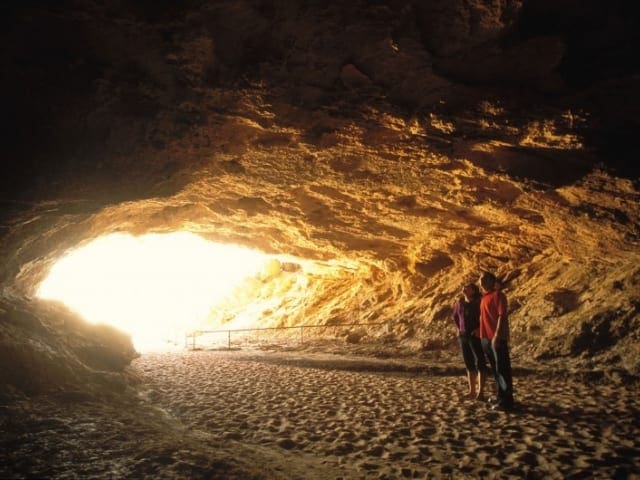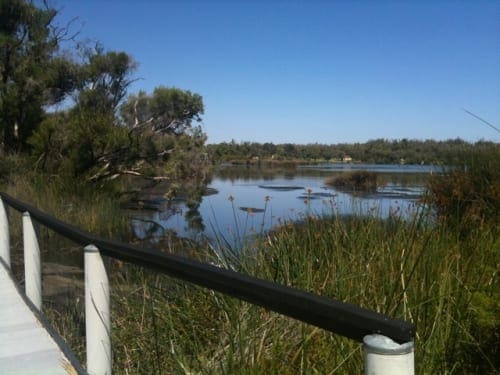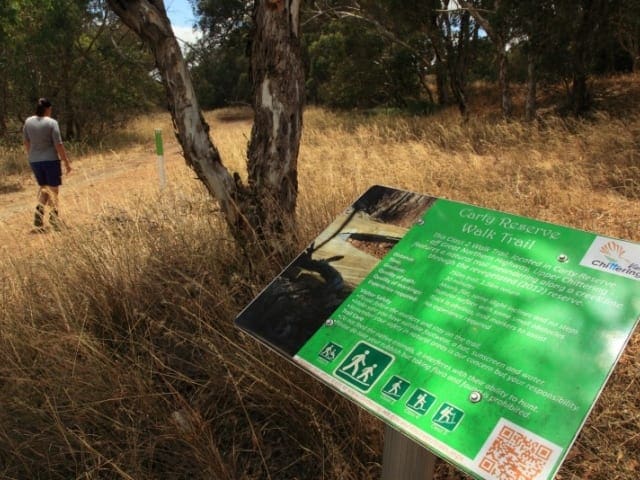Hike at a Glance
Max elevation: 0m
Min elevation: 0m
Total Ascent: 0m
Hike overview
Lake Thetis Loop Trail is an easy, 1.5km walk around the shores of Lake Thetis. It is one of only a few places in the world with living marine thrombolites, or 'Living fossils'. The first 300m of Boardwalk, which passes the best examples of thrombolites in the lake, is universally accessible.
Enjoy an easy 1.5km loop walk around Lake Thetis and gain an insight into what life was like at the dawn of time. Like the famous stromatolites of Hamelin Pool, in Shark Bay, these rock-like structures on the edge of Lake Thetis are built by micro-organisms too small for the human eye to see. Within the structures are living communities of diverse inhabitants with population densities of 3000 per square metre! The thrombolite-building micro-organisms of Lake Thetis resemble the earliest forms of life on Earth. The discovery of modern examples helped scientists to understand the significance of micro-organisms in the environment and unravel the long history of life on Earth. Today living examples of these once completely dominant organisms are restricted to only a few places.
Tips
Start Point: Just off Hansen Bay Road, 1km from Cervantes town centre. 3 hours drive north from Perth.
End Point: Just off Hansen Bay Road, 1km from Cervantes town centre. 3 hours drive north from Perth.
Region: Cervantes, Coral Coast
For more information, a location map and GPS file please visit Trails WA.
Gallery
Got some great shots from this hike? Upload your photos here to inspire others and show off the beauty of the trail!
Uploading your photos doesn’t mean you lose ownership. You can be credited for your contributions, and you can request removal at any time.
Content use
Please don’t copy GPX files or content from this site to AllTrails or other platforms. Each trail has been personally mapped, documented, and refined to support Australia’s bushwalking and hiking community. While some details come from land managers, every listing reflects significant personal effort. This is a free, community-driven initiative—your respect helps keep it that way.
Walk map and GPX file
It looks like I don’t have a GPX file for this trail yet. If you have one to share, please email it to me! I’ll verify it against official maps before adding it to help other hikers have a safer, easier experience. Thanks for contributing to a better hiking resource.
Getting there
Getting to the trailhead: Lake Thetis Reserve.
Closest towns to this walk: Harvey, Myalup, Preston Beach, Waroona, Yarloop
About the region
The cray fishing town of Cervantes is your gateway to another world, the Pinnacles Desert of Nambung National Park. Regarded as one of Australia's most unique landscapes, you could almost believe you are walking on the moon as you follow the trail, passing thousands of limestone spires rising eerily out of the shifting sand. You can get to Cervantes in just over 2 hours from Perth's northern suburbs, following the scenic Indian Ocean Drive, or by hopping aboard one of the many day tours that regularly depart from Perth. The town itself was established in 1962 to accommodate workers in the local cray fishing industry and got its name from the American whaling ship 'Cervantes' that was wrecked here in 1844.
Similar walks nearby
Looking for more walks in or near Lake Thetis Reserve? Try these trails with a similar difficulty grade.
Track grade
Grade 2 (Easy) - A Gentle Introduction to Inclines: Grade 2 on the AWTGS represents easy walking tracks that offer a slightly more challenging experience compared to Grade 1. Similar to Grade 1, no prior bushwalking experience is required. The track surface is typically hardened or compacted and may have gentle hill sections or occasional steps. The total distance of a Grade 2 walk is typically no greater than 10 kilometers. These walks are still suitable for families with a bit more experience or those seeking a gentle introduction to some inclines.
Explore safe
Plan ahead and hike safely! Carry enough water, pack layers for changing conditions, and bring safety gear like a torch, PLB, and reliable communication device. Check official sources for trail updates, closures, and access requirements, and review local weather and bushfire advice. Most importantly, share your plans with someone before you go. Being prepared makes for a safer and more enjoyable hike! Stay Safe, Explore More, and Always #ExploreSafe.
Packing checklists
What you carry in your pack depends on factors like weather, terrain, and your adventure type. Not sure what to bring? My free planning, food, and packing checklists are a great starting point, covering day hikes, overnight trips, and multi-day adventures. Use them to customise your kit and always prioritise safety.
Let someone know
Before heading out, take a moment to fill out your trip intentions form. It’s a quick way to share your hike details with family or friends. If something goes wrong, they can notify emergency services, ensuring a faster response and peace of mind. Stay safe and enjoy your adventure
Suggest an edit
Spotted a change on this trail? Maybe there are new features, the route has shifted, or the trail is permanently closed. Whatever the update, I’d love your input. Your feedback helps fellow hikers stay informed and ensures that our trail info stays fresh and reliable.
Acknowledgement of Country
Trail Hiking Australia acknowledges the Traditional Owners of the lands on which we hike and pay respects to their Elders, past and present, and we acknowledge the First Nations people of other communities who may be here today.






